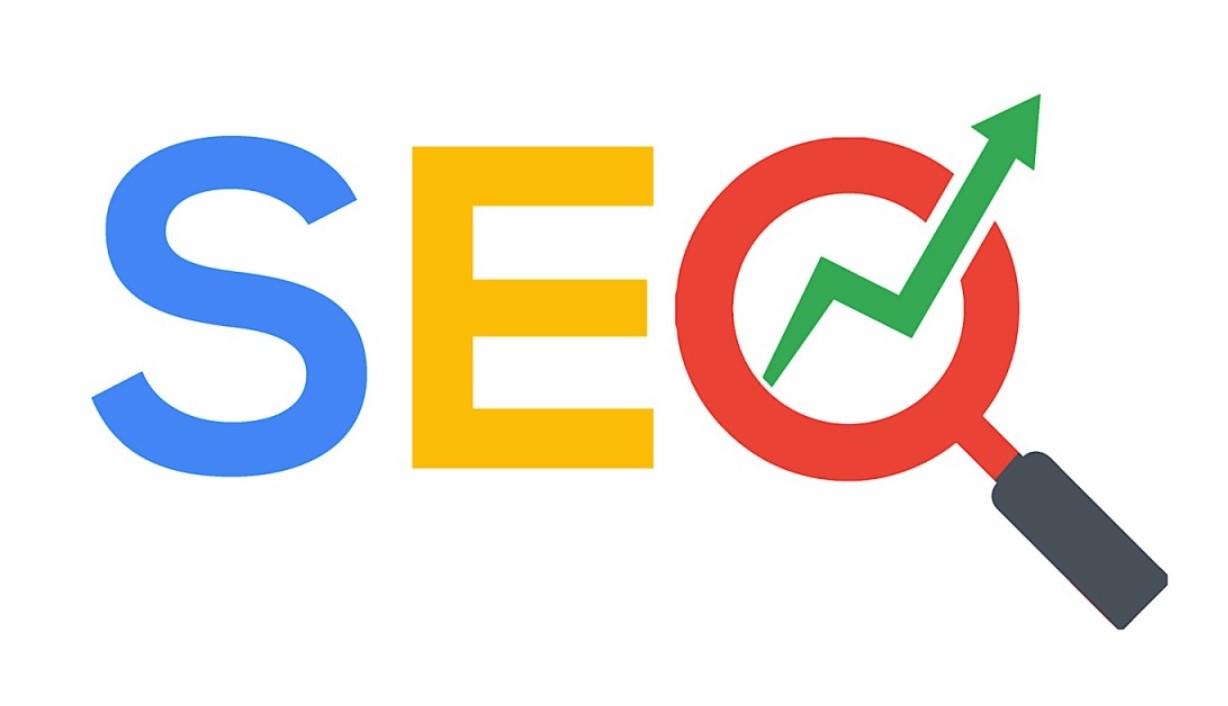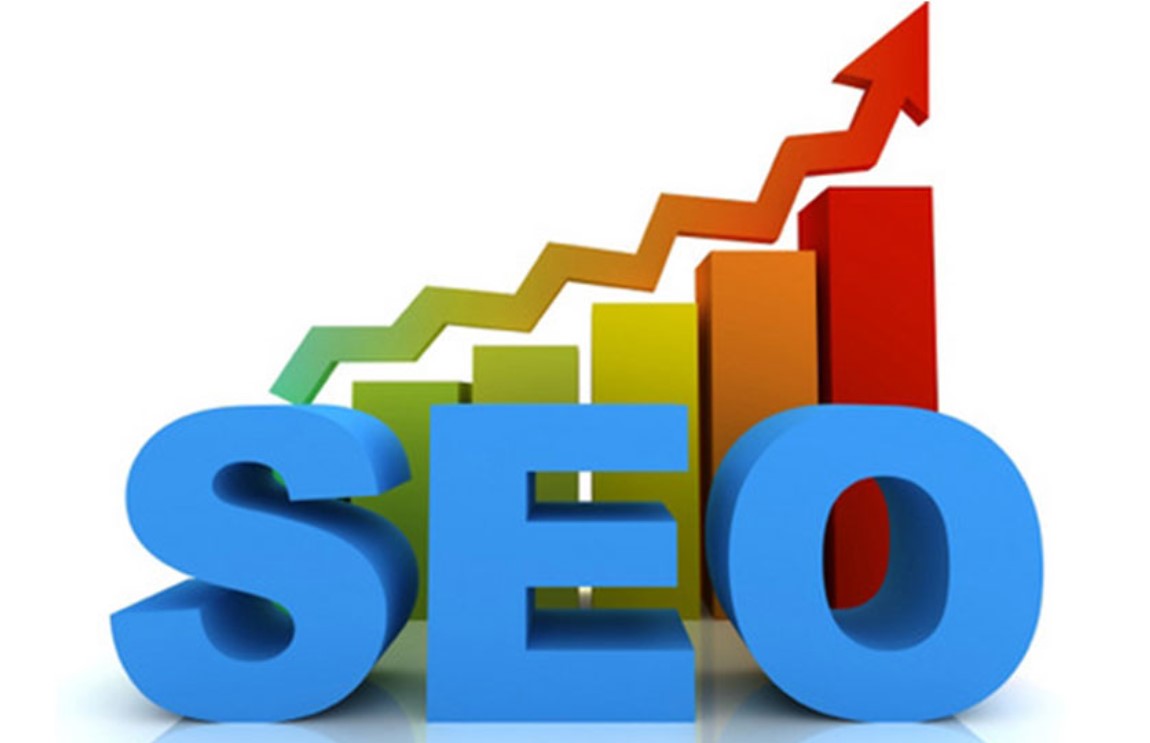Mastering SEO: How to Drive Traffic and Boost Sales for Your Online Business
In the digital world, Search Engine Optimization (SEO) plays a pivotal role in determining the success of your online business. If you aim to drive significant traffic to your website and convert that traffic into sales, mastering SEO is non-negotiable. This article will guide you through actionable SEO strategies, introduce you to essential tools, and provide examples of products that can help boost your online presence.
What is SEO and Why is it Crucial for Your Online Business?

Search Engine Optimization (SEO) is the practice of improving your website’s visibility in search engine results pages (SERPs) like Google, Bing, and Yahoo. It involves a combination of strategies and techniques aimed at helping your website rank higher in search engine results, making it easier for users to find your business when they search for relevant terms (keywords).
When users perform a search, search engines like Google analyze and index billions of web pages to deliver the most relevant results. SEO ensures that your website stands out among this vast sea of content by making it more appealing and useful to both search engines and users.
How SEO Works
Search engines use complex algorithms to determine which websites appear at the top of search results. These algorithms assess multiple factors, including:
- Relevance of Content: Does your page provide answers to the user’s query?
- Keywords: Does your page include the specific terms that users are searching for?
- Backlinks: How many high-quality links from other reputable sites point to your page?
- User Experience: Is your website mobile-friendly? Does it load quickly? Is it easy to navigate?
- Domain Authority: How authoritative is your website in its niche?
SEO is the process of optimizing your website so that it performs well in these areas, helping it rank higher and appear on the first page of search results. This is crucial because users are far more likely to click on links that appear on the first page of results — in fact, the top five results get more than 75% of clicks. If your website ranks beyond the first page, you could be missing out on significant traffic and potential customers.
Components of SEO that Drive Traffic and Sales
To truly understand why SEO is essential, let’s break down some of the core elements that can directly impact your business’s success:
1. Keyword Research
SEO begins with keyword research, which involves identifying the terms and phrases your potential customers are using when searching for products or services. By targeting the right keywords, your business can appear in front of users at the exact moment they are searching for a solution.
2. On-Page SEO
This includes optimizing your website’s content, meta descriptions, title tags, headers, and images. On-page SEO ensures that your website is structured in a way that is both user-friendly and easy for search engines to understand. Well-optimized on-page elements can significantly improve your rankings.
3. Off-Page SEO
Off-page SEO focuses on external factors that influence your site’s rankings, such as backlinks (links from other reputable websites pointing to your site). The more high-quality backlinks your site has, the more authoritative it appears to search engines, which can boost your rankings.
4. Technical SEO
Technical SEO involves optimizing the technical aspects of your site, such as ensuring that search engines can crawl and index your pages efficiently. Technical SEO includes optimizing your site’s speed, ensuring mobile responsiveness, creating an XML sitemap, and fixing any broken links.
5. Content Marketing
Creating high-quality, valuable content that answers users’ questions and solves their problems is a crucial part of SEO. By publishing blogs, guides, infographics, and other types of content, your site can attract more visitors, build authority, and encourage visitors to convert into customers.
Benefits of Mastering SEO for Your Online Business

Mastering Search Engine Optimization (SEO) can bring transformative benefits to your online business. As competition in the digital world intensifies, businesses that prioritize SEO gain a significant advantage over those that do not. SEO is not merely a tool to enhance visibility; it is a comprehensive strategy that can lead to long-term growth, increased profitability, and sustainability for your business.
In this section, we will explore the specific benefits of mastering SEO and how these advantages directly impact your online presence, traffic, sales, and overall success.
1. Increased Organic Traffic
One of the primary benefits of SEO is the ability to drive organic traffic to your website. Organic traffic refers to visitors who find your website through unpaid search results on search engines like Google, Bing, and Yahoo. When your site ranks highly for relevant keywords, it becomes easier for potential customers to discover your business.
Why is organic traffic important?
- Sustainability: Unlike paid advertising, where you pay for each click or impression, organic traffic is free. Once you’ve optimized your website, it can continue to attract visitors without the need for ongoing financial investment.
- Targeted Audience: SEO helps you reach people who are actively searching for the products or services you offer. This means the traffic you attract is more likely to be interested in what you’re selling, leading to higher engagement and conversion rates.
How SEO Drives Organic Traffic
By focusing on keyword optimization, on-page SEO, and content creation, businesses can rank for the keywords that their audience is searching for. For example, if you run an online shoe store and optimize your site for the keyword “best running shoes for women,” people searching for that phrase will be more likely to visit your site. This process, over time, brings in a steady stream of qualified visitors who are already interested in your products or services.
Example: An eCommerce store selling fitness equipment might optimize its product pages for search terms like “best home treadmills” or “affordable dumbbells.” By appearing at the top of search results for these keywords, the store can attract high-intent traffic and increase the likelihood of sales.
2. Improved User Experience (UX)
While SEO is primarily about optimizing for search engines, its principles also improve the user experience (UX) on your website. SEO encourages website owners to focus on factors such as site speed, mobile optimization, and ease of navigation — all of which make the user experience smoother and more enjoyable.
Key Ways SEO Enhances UX
- Faster Load Times: Google rewards websites that load quickly. Slow-loading websites not only frustrate users but also rank lower in search results. By optimizing your site’s speed (a key aspect of technical SEO), you ensure that visitors can access your content without delays, reducing bounce rates and improving engagement.
- Mobile-Friendly Design: With a large percentage of users accessing websites via mobile devices, having a mobile-optimized site is crucial. Google’s mobile-first indexing also means that mobile usability is a ranking factor. A website optimized for mobile will enhance UX and increase rankings on both desktop and mobile searches.
- Clear Navigation: Good SEO practice involves optimizing website structure, making it easy for both search engines and users to navigate. If users can find what they’re looking for quickly and easily, they are more likely to stay on your site longer, explore multiple pages, and complete a purchase.
Example: A restaurant with a fast-loading, mobile-optimized website that features clear navigation will not only rank higher in search results but also make it easier for users to browse menus, make reservations, or order online. This improved experience can result in more reservations and online orders.
3. Cost-Effective Marketing
SEO is one of the most cost-effective marketing strategies available to online businesses. Unlike paid advertising, where you pay for every click or impression, SEO helps you generate traffic organically, without ongoing costs. Once your site is optimized and ranking, it can continue to bring in visitors without additional investments in paid media.
Why SEO is Cost-Effective:
- Long-Term ROI: SEO requires upfront investment in time, resources, and possibly tools or expert services. However, once your website is well-optimized and begins ranking, it can generate traffic for months or even years with minimal ongoing effort. Paid ads, on the other hand, stop delivering results the moment you stop paying.
- Free Clicks: With SEO, every click to your website is free. You don’t have to pay per click as you do with Google Ads or social media advertising. This makes SEO a highly efficient way to increase traffic without constant financial outlays.
- Competitiveness: Even if you don’t have the same budget as larger competitors, good SEO practices can help you rank alongside, or even above, businesses with more resources. By targeting long-tail keywords (more specific search phrases), smaller businesses can attract highly qualified traffic that converts.
Example: A small online store selling handmade jewelry can use SEO to rank for niche keywords like “eco-friendly handmade jewelry” or “unique silver earrings” without spending on expensive PPC campaigns. By consistently ranking for these terms, the store can drive traffic and increase sales organically.
4. Higher Conversion Rates
SEO helps you attract visitors who are already looking for products or services like yours, meaning they are highly qualified leads. This makes them more likely to engage with your website and convert into customers.
How SEO Improves Conversions:
- Intent-Driven Traffic: People who find your website through search engines are often looking for something specific. If your site appears in their search results, it’s because it matches their intent — whether they’re looking to buy a product, read a review, or learn more about a service. This means SEO traffic tends to have higher conversion rates compared to other traffic sources.
- Better Targeting: By conducting keyword research, you can identify terms and phrases that your potential customers are using, and tailor your content to address their needs. For example, someone searching for “buy eco-friendly shoes” is likely ready to make a purchase, whereas someone searching for “what are eco-friendly shoes” may still be in the research phase. By understanding and targeting these different stages of the buying process, you can optimize your content to convert different types of users.
Example: A software company offering project management tools could optimize its landing pages for keywords like “best project management tools for small teams” or “affordable project management software.” By doing so, they attract visitors who are actively seeking out these solutions, increasing the likelihood of conversions.
5. Building Brand Authority and Credibility
Ranking high in search results not only brings traffic but also builds brand authority and credibility. Users tend to trust websites that appear at the top of search engine results pages (SERPs) because they perceive them as more reliable and reputable. This trust can translate into more clicks, longer visit durations, and ultimately, higher sales.
How SEO Builds Brand Authority:
- Top Rankings Build Trust: Websites that rank on the first page of Google are often seen as industry leaders. When your business consistently ranks for competitive keywords, customers will perceive you as an expert in your field.
- Content Authority: SEO encourages businesses to produce high-quality, informative content that answers users’ questions. By creating valuable content, you can become a trusted source of information, further building your brand’s reputation.
- Backlinks from Authoritative Sites: SEO also involves building backlinks from other high-authority websites. When reputable sites link to your content, it signals to search engines and users alike that your site is trustworthy and credible.
Example: A business that publishes informative blog posts about “sustainable fashion” or “eco-friendly living tips” can not only rank higher for these terms but also become a go-to source of information for users interested in these topics. Over time, this helps build brand loyalty and encourages repeat visits.
Essential SEO Tools to Boost Traffic and Sales

To excel at SEO, you need powerful tools to analyze, optimize, and track your performance. Below are five essential SEO tools every online business should consider:
1. SEMrush
SEMrush is an all-in-one marketing toolkit that helps businesses improve online visibility. It covers everything from keyword research, site audits, backlink analysis, and competitor tracking.
- Pros: Comprehensive suite, excellent for competitive research.
- Cons: Can be overwhelming for beginners.
- Price: $119.95/month for the Pro plan.
- Features: Keyword tracking, backlink audit, SEO audit, content marketing tools.Visit SEMrush to learn more.
2. Ahrefs
Ahrefs is known for its powerful backlink analysis and keyword research capabilities. It helps you find high-ranking keywords and spy on your competitors’ backlinks.
- Pros: Best for backlink analysis, user-friendly.
- Cons: Pricing is on the higher side.
- Price: $99/month for Lite plan.
- Features: Site audit, keyword research, rank tracking, backlink analysis.Learn more at Ahrefs.
3. Yoast SEO
For WordPress users, Yoast SEO is a must-have plugin. It optimizes your site content, helps with metadata, and improves readability.
- Pros: Easy integration with WordPress, beginner-friendly.
- Cons: Limited free version.
- Price: Free, premium starts at $89/year.
- Features: On-page optimization, content readability checker, keyword focus.Get Yoast SEO at Yoast.com.
4. Google Search Console
Google Search Console is a free tool from Google that allows you to monitor, maintain, and troubleshoot your website’s presence in search results.
- Pros: Free, direct insight from Google.
- Cons: Lacks comprehensive analytics.
- Price: Free.
- Features: Search traffic analysis, index coverage report, technical SEO insights.Access Google Search Console at Google Search Console.
5. Moz Pro
Moz Pro offers a comprehensive SEO toolset, including keyword research, rank tracking, and SEO audits. It’s known for its easy-to-use interface and helpful learning resources.
- Pros: Strong community support, reliable data.
- Cons: Limited features compared to Ahrefs and SEMrush.
- Price: $99/month.
- Features: Site audits, rank tracking, keyword analysis, on-page SEO optimization.Discover more at Moz.
Comparison of Top SEO Tools

| Product | Use Case | Pros | Cons | Price | Features |
|---|---|---|---|---|---|
| SEMrush | All-in-one SEO solution | Comprehensive toolset, competitive analysis | Expensive for small businesses | $119.95/month | Keyword research, site audit, content marketing tools |
| Ahrefs | Backlink analysis and research | Best for backlinks, detailed reports | Higher pricing | $99/month | Backlink analysis, rank tracking, site audits |
| Yoast SEO | On-page SEO for WordPress | Easy to use, beginner-friendly | Free version is limited | Free/$89 per year | On-page optimization, readability check, meta tags |
| Google Search Console | Monitoring search performance | Free, direct insights from Google | Lacks detailed analytics | Free | Indexing issues, technical SEO, search traffic data |
| Moz Pro | Keyword research and SEO audits | User-friendly, strong community support | Lacks some advanced features | $99/month | Site audit, keyword analysis, rank tracking |
Real-World Examples: How SEO Tools Drive Traffic and Boost Sales
1. SEMrush for eCommerce Stores
For online stores, SEMrush helps identify the most profitable keywords and analyze competitors’ SEO strategies. With features like SEO audits and content optimization, eCommerce businesses can attract more traffic and convert visitors into sales.
- Problem Solved: Identifies SEO weaknesses, uncovers high-value keywords, tracks competitors.
- Where to Buy: SEMrush is available via their official website. Buy SEMrush.
2. Ahrefs for B2B Companies
Ahrefs is excellent for B2B companies looking to improve their backlink profile and dominate niche keywords. It helps identify top-performing competitors and allows businesses to replicate their strategies.
- Problem Solved: Improves site authority by building quality backlinks.
- Where to Buy: Ahrefs can be purchased through their site. Buy Ahrefs.
3. Yoast SEO for Bloggers
For bloggers, Yoast SEO ensures that their content is optimized for both search engines and readers. By improving readability and keyword usage, Yoast helps bloggers rank higher and increase organic traffic.
- Problem Solved: Optimizes content for readability and SEO, improves on-page elements.
- Where to Buy: Download it from the Yoast website. Get Yoast SEO.
How to Buy and Where to Buy SEO Tools

Purchasing SEO tools is essential for driving traffic and sales. Here’s where you can buy them:
- SEMrush: Available for purchase directly from the SEMrush website. Plans start at $119.95 per month.
- Ahrefs: Buy from Ahrefs, starting at $99/month.
- Yoast SEO: Available for free or premium from Yoast.
- Moz Pro: Subscribe via the Moz website with prices starting at $99/month.
- Google Search Console: Completely free at Google Search Console.
FAQs about Mastering SEO
- How long does it take to see SEO results?
SEO results typically take 3-6 months depending on your efforts and competition. - Is SEO expensive?
SEO itself is free, but using advanced SEO tools like SEMrush or Ahrefs can range from $99 to $199 per month. - What are the best free SEO tools?
Google Search Console, Google Analytics, and Yoast SEO (free version) are top free tools. - Can I do SEO without any tools?
Yes, but using tools simplifies the process, making it easier to track progress and optimize. - What is the most important part of SEO?
Content and backlinks are critical, along with on-page SEO like proper use of headers and keywords.
Mastering SEO is an essential step to driving traffic and boosting sales for any online business. By using the right tools and strategies, you can see a significant increase in your organic traffic, improve customer engagement, and grow your brand’s visibility online.






